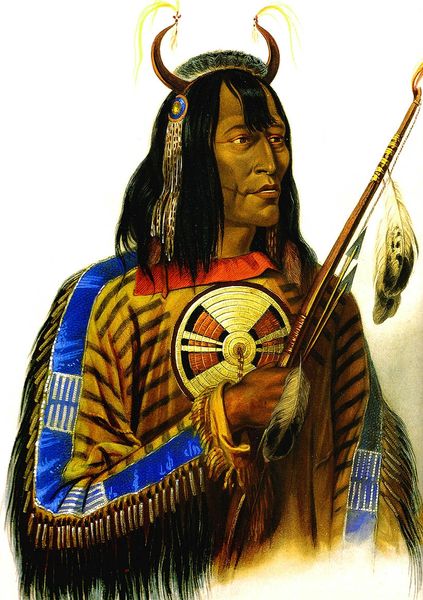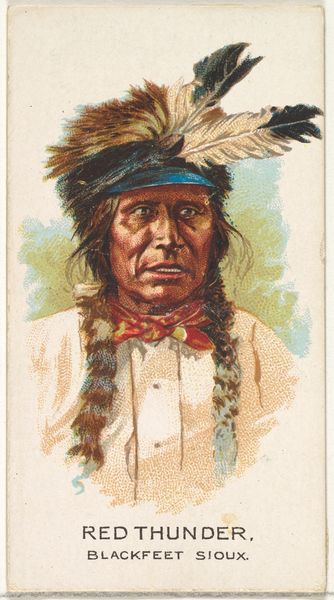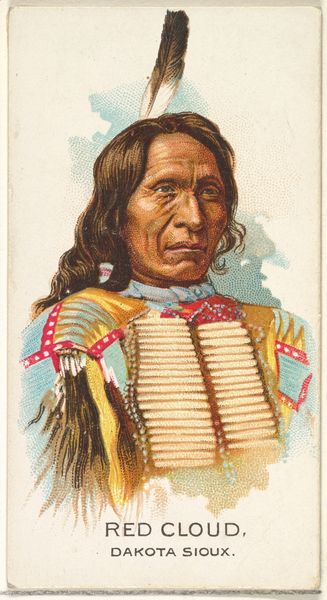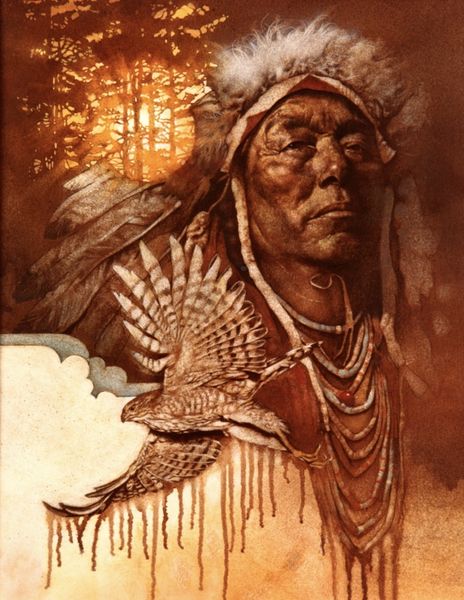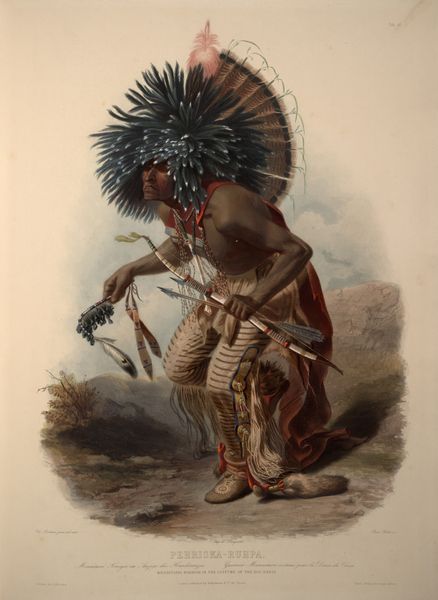
paper
#
portrait
#
paper
#
oil painting
Dimensions: 44 x 55.5 cm
Copyright: Public domain
Curator: Karl Bodmer produced this aquatint titled “Mato-Tope, a Mandan Chief” in 1833. Bodmer, a Swiss artist, accompanied Prince Maximilian zu Wied-Neuwied on an expedition to North America. This piece documented Mato-Tope, a leader of the Mandan people, along the Missouri River. Editor: Immediately, what strikes me is the overwhelming verticality of the composition. From the spear in his hand to the towering headdress, the image seems designed to emphasize height and presence. It makes the figure seem incredibly imposing, despite the medium's delicate line work. Curator: Exactly. Bodmer's works provide invaluable insight into the lives and cultures of Native American tribes at a pivotal moment in history. Mato-Tope became an important leader and diplomat for the Mandan people during a time of immense change and westward expansion. Editor: Tell me about that dress – the material. The contrasting textures, the play of light and shadow within the fur…It’s exquisitely rendered, creating a very tangible, almost haptic, experience for the viewer. How accurate would you say that is? Curator: Well, this piece and Bodmer’s expedition exist within a broader history of European representation of Native Americans, one fraught with both romanticization and inherent power imbalances. Bodmer sought, within the artistic conventions of his era, to accurately document the clothing and other objects he encountered. The resulting pieces still function today to communicate Indigenous perspectives. Editor: The careful detailing does invite a deep look. And it offers insight. Consider how the spear acts as both a symbol of power and, through the soft feathers, vulnerability. It creates a real tension within the artwork, wouldn't you say? Curator: Absolutely. Beyond pure representation, “Mato-Tope, a Mandan Chief,” reflects Bodmer's and the expedition’s interactions within a rapidly changing social landscape. His artistic rendering now enables engagement with broader conversations concerning colonial narratives and cultural preservation. Editor: Looking at the colors again, I feel a pull from earthy, almost understated palette, which focuses your eye on the striking red complexion of the chief himself. That bold directness in pigment usage is definitely part of its power, wouldn’t you agree? Well, in that sense, color alone might be an argument for an indigenous hand guiding Bodmer. It truly makes this quite beautiful, doesn't it? Curator: I agree. Examining Bodmer’s portfolio gives valuable views to these figures' places in our larger historical context, providing details that are not present anywhere else, at the time, as vivid, and of the life experience of our brothers and sisters.
Comments
No comments
Be the first to comment and join the conversation on the ultimate creative platform.



